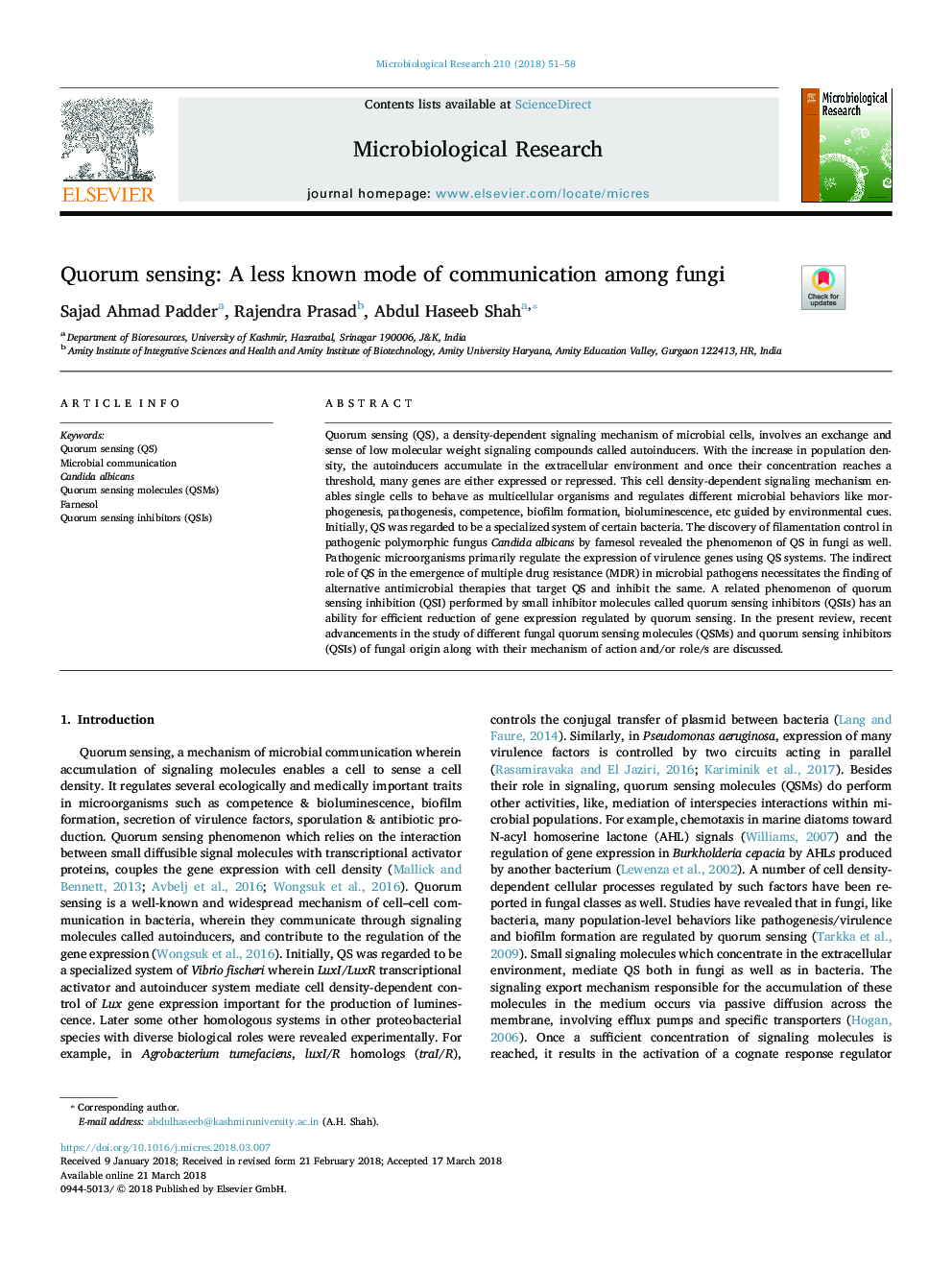| کد مقاله | کد نشریه | سال انتشار | مقاله انگلیسی | نسخه تمام متن |
|---|---|---|---|---|
| 8422936 | 1545964 | 2018 | 8 صفحه PDF | دانلود رایگان |
عنوان انگلیسی مقاله ISI
Quorum sensing: A less known mode of communication among fungi
ترجمه فارسی عنوان
سنجش قاعده: حالت کمتر ارتباطی میان قارچ ها
دانلود مقاله + سفارش ترجمه
دانلود مقاله ISI انگلیسی
رایگان برای ایرانیان
موضوعات مرتبط
علوم زیستی و بیوفناوری
بیوشیمی، ژنتیک و زیست شناسی مولکولی
بیوتکنولوژی یا زیستفناوری
چکیده انگلیسی
Quorum sensing (QS), a density-dependent signaling mechanism of microbial cells, involves an exchange and sense of low molecular weight signaling compounds called autoinducers. With the increase in population density, the autoinducers accumulate in the extracellular environment and once their concentration reaches a threshold, many genes are either expressed or repressed. This cell density-dependent signaling mechanism enables single cells to behave as multicellular organisms and regulates different microbial behaviors like morphogenesis, pathogenesis, competence, biofilm formation, bioluminescence, etc guided by environmental cues. Initially, QS was regarded to be a specialized system of certain bacteria. The discovery of filamentation control in pathogenic polymorphic fungus Candida albicans by farnesol revealed the phenomenon of QS in fungi as well. Pathogenic microorganisms primarily regulate the expression of virulence genes using QS systems. The indirect role of QS in the emergence of multiple drug resistance (MDR) in microbial pathogens necessitates the finding of alternative antimicrobial therapies that target QS and inhibit the same. A related phenomenon of quorum sensing inhibition (QSI) performed by small inhibitor molecules called quorum sensing inhibitors (QSIs) has an ability for efficient reduction of gene expression regulated by quorum sensing. In the present review, recent advancements in the study of different fungal quorum sensing molecules (QSMs) and quorum sensing inhibitors (QSIs) of fungal origin along with their mechanism of action and/or role/s are discussed.
ناشر
Database: Elsevier - ScienceDirect (ساینس دایرکت)
Journal: Microbiological Research - Volume 210, May 2018, Pages 51-58
Journal: Microbiological Research - Volume 210, May 2018, Pages 51-58
نویسندگان
Sajad Ahmad Padder, Rajendra Prasad, Abdul Haseeb Shah,
